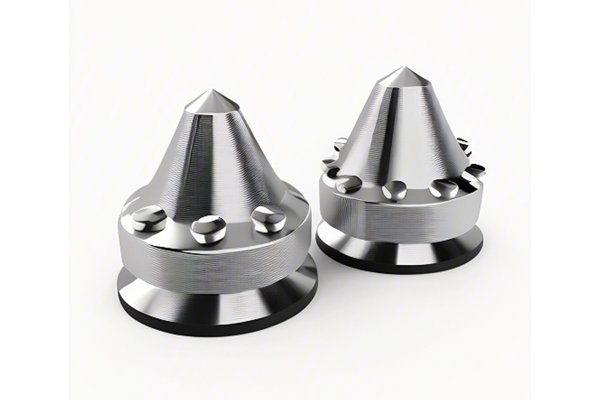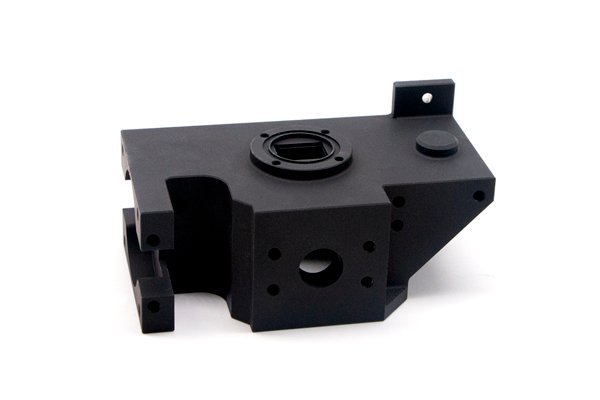Did you know that precision machining is not just about cutting metal to the right dimensions? It’s about ensuring that every part not only meets specifications but performs under stress and in varied environments. In industries ranging from aerospace to automotive, the integrity of machined parts can be the difference between success and failure. This blog will delve into the comprehensive testing processes utilized by CNC aluminum processing plants to guarantee the quality and performance of machined parts.
The Importance of Quality Assurance in CNC Machining
Quality assurance in CNC machining is paramount. In the high-stakes world of manufacturing, overlooking even the smallest detail can lead to catastrophic failures. This is particularly true in sensitive sectors where components must withstand significant mechanical stresses or extreme environmental conditions. For aluminum parts, which are often used in critical applications due to their lightweight and strength, meticulous testing and quality assurance are vital.
Understanding CNC Machining Processes
Before we dive into the testing aspects, it’s essential to understand CNC (Computer Numerical Control) machining. This process involves the automated control of machining tools by means of a computer. CNC machining allows for precise cuts, excellent repeatability, and the ability to craft complex shapes. Most CNC aluminum processing plants employ several techniques, including:
While these processes lay the foundation for excellent part production, they must be paired with rigorous testing methodologies to ensure that the machined components perform as expected.
Common Testing Methods in CNC Machining
CNC aluminum processing plants utilize various testing methods throughout the production process. These fall into several categories: dimensional inspections, mechanical property tests, functional tests, and non-destructive evaluations (NDE).
Dimensional Inspection
Dimensional inspection checks the physical dimensions of the machined parts against the specified tolerances. Advanced tools and equipment, such as:
Dimensional inspections assure that parts are machined to specifications, avoiding issues that can arise from errors in machining.
Mechanical Property Testing
The structural integrity of machined aluminum parts is tested through various mechanical property tests, which may include:
By assessing mechanical properties, CNC processing plants can ensure that their aluminum parts can withstand intended stresses and usage.
Functional Testing
Functional testing goes beyond verifying specifications. It involves simulating the operational environments of the production parts. Examples include:
Functional testing ensures that parts like hydraulic components or engine blocks perform reliably under the conditions they will encounter in their intended applications.
Non-Destructive Evaluation (NDE)

NDE methods ensure the integrity of the part without causing any damage. Techniques used include:
NDE techniques are particularly important for critical components where failure could pose safety risks, allowing for comprehensive evaluations without compromising parts.
Implementing a Rigorous Quality Control System
To ensure that all testing methods are effective, CNC aluminum processing plants must implement a robust quality control system. This system often consists of several key components:
Standard Operating Procedures (SOPs)
Creating detailed SOPs for every stage of the manufacturing process is key. These documents dictate how each step should be executed, including setup, operation, testing, and maintenance procedures. This consistency ensures that every worker follows the same guidelines, leading to uniform output quality.
Training Programs
Investing in continuous training for employees is critical to quality control. Proper training ensures that operators understand not only how to use the machinery but also the importance of quality testing. Workshops on new technologies, quality standards, and best practices should be held regularly.
Real-time Monitoring
Advancements in technology now allow for real-time monitoring of machining processes. Monitoring systems can track key parameters such as temperature, speed, and cutting forces during production. By analyzing this data, operators can make immediate adjustments to mitigate defects before they become costly mistakes.
Documentation and Traceability
Maintaining a detailed history of each part, including materials used, machine settings, and test results, provides a traceable record that can help identify the source of any quality issues. This information becomes invaluable for audits, quality investigations, or recalls, should they arise.
The Role of Advanced Technologies in Testing
As technology continues to advance, CNC aluminum processing plants can leverage new tools to enhance their testing methodologies. Some emerging technologies include:
Artificial Intelligence (AI)
AI can analyze vast data sets to identify patterns that might elude human operators. By implementing AI-driven quality control systems, plants can predict potential failures or defects based on historical data and adjust processes in real time.
Additive Manufacturing Techniques
Integrating additive manufacturing (3D printing) methods with CNC machining can create complex geometries that optimize performance. Testing these hybrid components becomes essential, ensuring that traditional qualities meet or exceed those offered by new technologies.
Internet of Things (IoT)
IoT sensors can connect various pieces of machinery and monitoring equipment to a centralized system, enabling alerts and insights on quality control. By leveraging IoT, CNC plants can ensure more accurate, streamlined testing processes, resulting in real-time quality assurance.
: The Road Ahead for Quality in CNC Aluminum Processing
In summary, the assurance of quality and performance in CNC aluminum machining is deeply rooted in a systematic approach to testing and control. From rigorous dimensional inspections and mechanical property tests to innovative technologies like AI and IoT, understanding and implementing these processes can dramatically enhance product quality.
As industries demand higher precision and reliability, CNC aluminum processing plants must stay ahead of the curve by continuously evolving their testing practices. This adaptability is not just about maintaining competitive advantage; it’s also about ensuring the safety and effectiveness of components used in critical applications.
Ultimately, thoughtful considerations regarding quality assurance not only benefit manufacturers but also protect end-users and consumers. As we advance into a future where technology plays an even more significant role, the discourse around quality in CNC machining remains vital—an ongoing challenge that demands attention and innovation.
Call to Action
In light of this exploration, we encourage readers to reflect on the quality measures in place in their own organizations or supply chains. Consider how investments in testing and technology can lead to more reliable and durable products. Remember, in the quest for excellence, no detail is too small to overlook. Your next project could very well depend on it.






